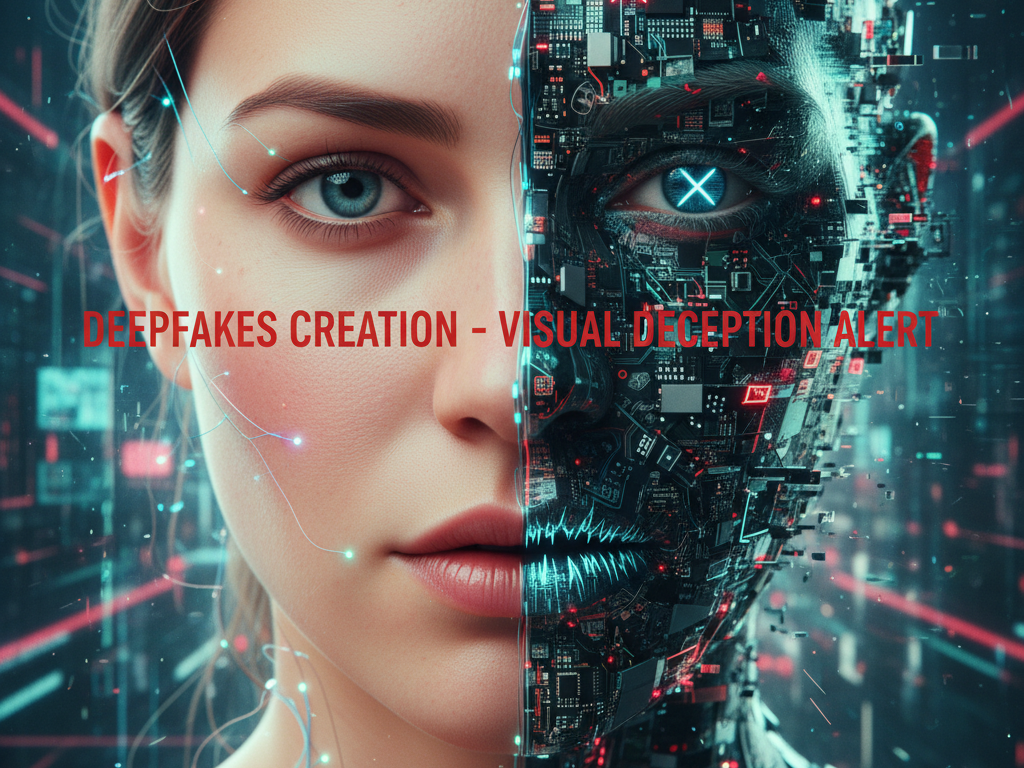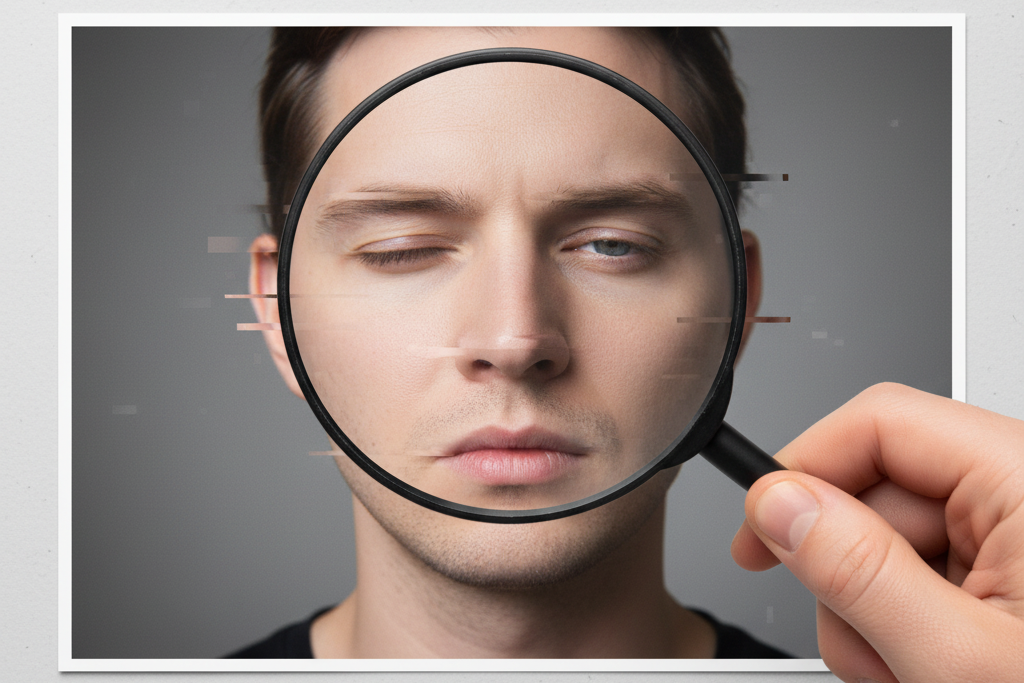You’re relaxing at home in October 2025, browsing X, when a video appears on your screen of your boss breaking the news of an unexpected layoff—voice identical, mannerisms exact. You freak out only to find it’s a deepfake, created by AI to sabotage morale or the stock price. Welcome to the crazy world of deepfakes, where AI creates videos, images, and audio so realistic they dissolve the line between reality and fantasy. These artificial fakes are no longer just online jokes; they’re driving scams, influencing elections, and breaking trust across the globe. Deepfakes reported incidents increased 10-fold between 2023 and 2025, with losses reaching $200 million in North America alone this year, according to reports. Resemble AI’s Q1 2025 Deepfake Incident Report. As someone who’s dug into AI tech and seen deepfakes fool even the sharpest eyes, I’m here to break it down: how these AI forgeries work, why they’re a growing menace, and practical ways to spot them. Whether you’re dodging a scam call or double-checking a viral clip, this guide is your roadmap to staying one step ahead in 2025’s digital jungle. Let’s dive in and unmask the truth.
Cracking the Code: How Deepfakes Are Built with AI
Deepfakes are the offspring of deep learning, a subfield of AI that emulates the patterns of human brains in order to produce unsettlingly realistic media. The term combines “deep learning” and “fake,” and since 2017, software such as GANs (Generative Adversarial Networks) has made them frighteningly easy to obtain. Here’s how it works: Two AIs are pitted against each other in a GAN—one, the generator, creates a deception by learning from mountains of data, such as a celebrity’s TikTok videos. The other, the discriminator, nitpicks at imperfections—say, a lip twitch that’s out of the ordinary—until the imitation is indistinguishable from the real thing. For video, autoencoders project a face’s contours into a digital blueprint, then paste them onto another body, merging with diffusion models for realistic physics—think hair naturally flowing in the breeze. Audio deepfakes? Software like WaveNet copies voices from just seconds of audio, capturing every quirk and hesitation.
It takes just a smartphone in 2025 to make a deepfake with tools like FluxAI—no code needed. Exhibit: A 2024 fraud employed a deepfake voice of a CEO to convince Arup Group to transfer $25 million, developed from public earnings calls. Financial Times: Arup lost $25mn in Hong Kong deepfake video conference scam. The technology is so smooth that 90% of observers can’t identify fakes without assistance. It’s not technology—it’s a lesson in deception, driven by merciless algorithms.

The Emerging Threat: Why Deepfakes Matter in 2025
Deepfakes are not only flashy technology—they’re a time bomb. By 2025, deepfake files are expected to reach 8 million, from 500,000 in 2023, inundating scams, politics, and personal lives. Financial scams run rampant: Voice deepfakes increased by 3,000% since 2019, costing $200 million in Q1 2025 alone, with scams impersonating execs or relatives pleading for money. In the UK, “family crisis” deepfake calls scammed $580 million last year.
Misinformation’s worse: A July 2025 deepfake of Trump “arresting” Obama went viral on Truth Social, causing chaos prior to midterms. In June, a Philippine senator’s Veo-created clip influenced voters on impeachment. Personal damage? Non-consensual deepfake pornography, directed at women like Taylor Swift, accounts for 96% of fake media, with 28% of UK students targeted by sextortion. Businesses are sabotaged—fake exec scandals bring down stocks—while terrorists employ deepfakes for propaganda.
The backlash? Trust is eroding: 90% of UK adults are fearful of deepfakes, leading to a “liar’s dividend” in which genuine videos come under suspicion. Deepfakes take advantage of all industries, from doctor approval scams in the healthcare sector to iGaming scams. As X tweets yell, “Kids are targets now!”—it’s not only money; it’s our hold on reality on the line.
Your Defense Kit: How to Detect Deepfakes Like an Expert
Deepfakes are challenging to catch in 2025 but achievable with keen eyes and more intelligent tools. On the visual check: Eyes that blink too mechanistically or appear glassy, skin too shiny and pore-less, or lighting that’s not right for the scene—such as shadows falling the wrong direction. Audio giveaways? Pay attention to lip-sync errors or respirations that don’t correlate with words. Context is everything: Verify clips against Google or TinEye; if the origin looks fishy, it likely is. Verify virals through Snopes or PolitiFact—both fact-checked that 2025 Obama video quickly.
Microsoft’s Video Authenticator detects artifacts in an instant; Reality Defender’s software checks textures with 95% accuracy. MIT’s DetectFakes game hones your intuition, raising spot rates from 50% to 65%. For sound, Phonexia’s detector pins down fakes in bulk. Ask for live video calls—deepfakes can’t wing it. X users swear by “AI vs. AI” tools, but your instinct + tech is the winner. Test on HydraFake datasets to remain ahead of new tricks.

Taming Deepfakes with Laws and Smarts
Regulations are ramping up: The U.S. TAKE IT DOWN Act (May 2025) compels platforms to remove non-consensual deepfake porn within 48 hours, and the EU’s AI Act fines dangerous fakes. Education is incorporating “deepfake drills” into 2025 curricula to enhance media literacy. Enterprises? Implement MFA, zero-trust solutions, and liveness checks such as palm scans to thwart face-based scams. C2PA watermarks stamp genuine media, verifiable through apps. The future rides on mass awareness—education and tech to outwit deepfake forgers.
Also Check How Deepfakes Are Fooling CEOs in 2025 here.
……………………………………………………………………………………………………………………………….
Deepfakes, driven by the unrelenting pace of AI, are redefining reality in 2025—from conspiracy to defamation. But with keen eyes, technology such as Reality Defender, and fresh legislation, you can fight back. Don’t be fooled by fakes—spot them, share them, and remain wise. Spot a deepfake? Share it in the comments or tag #CatchTheFake on X. Download a detector app today, and let’s keep truth at the forefront.
deepfakes, deepfakes explained, how deepfakes work, deepfake dangers 2025, spot deepfakes, detect AI forgeries, deepfake scams, AI-generated fakes, synthetic media threats, deepfake detection tools, voice deepfake risks, video deepfakes 2025, deepfake misinformation, financial fraud deepfakes, deepfake porn issues, election deepfakes, deepfake prevention tips, cybersecurity AI fakes, media literacy 2025, deepfake regulations.



